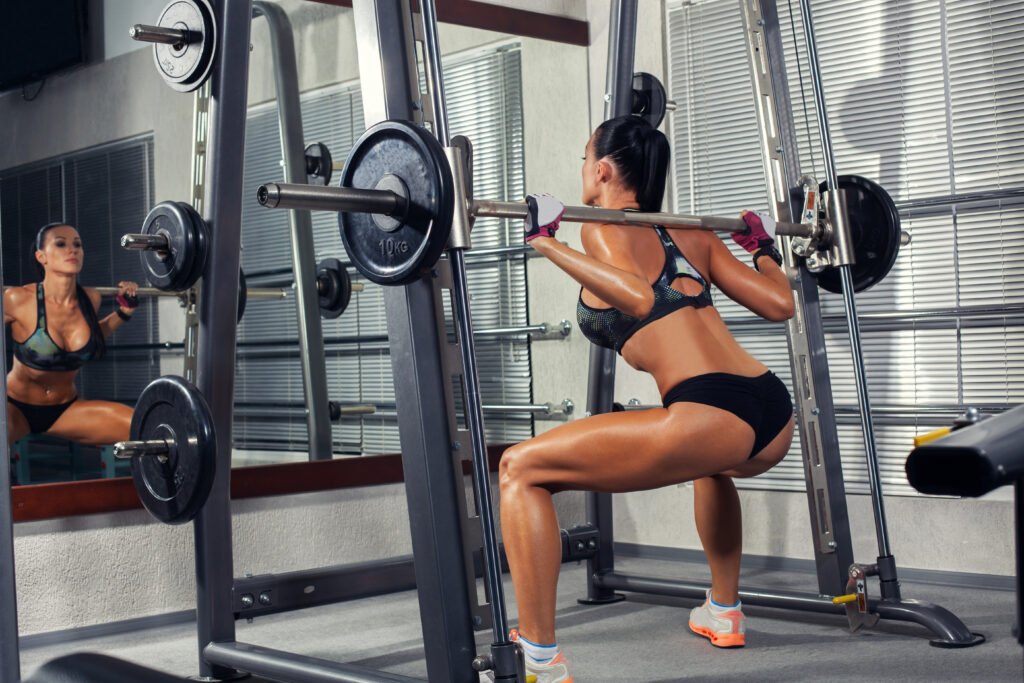There are many great weight room debates. Flat bench versus incline, leg extensions versus lunges, standing versus seated curls, nose-breakers versus dips, and, for that matter, protein versus fats. All of these exercises have their proponents and there are good arguments on both sides. In some cases, there is a definitive answer, and in others, there is not. For this article, we are here to talk about a particularly contentious debate: That between the back squat vs front squat. Which is better? Which will make you bigger, stronger, and faster? There are many squat-related questions that every athlete, bodybuilder, and weekend warrior would love to know the answers to. It’s not just about working hard (because everyone knows hard work is necessary) it’s also about working smart. And with that in mind, it’s important to choose the best exercises for getting the most bang for your buck. So, which exercise is better? Here is everything you need to know about back squat vs front squat.
Benefits of Back Squat
With all its benefits, there’s no wonder the traditional back squat is one of the most popular exercises in the weight room. Proper form is something people struggle with when it comes to nearly all compound exercises. The reason being that, unlike isolation exercises, compound ones require BOTH strength and coordination. When deadlifting, for example. You need to coordinate muscle movements in your lower back, forearms, glutes, quads, and toes. And, for squatting you need to do all that plus your shoulders, traps, and upper back. What all this amounts to is the importance of learning proper form. Start light and be patient as your muscles grow with disciplined, week-over-week work.
Assuming, you are using the right form and are not a ridiculous-looking half-squatter, when you back squat you are primarily working the following muscles:
- Glute Strength: Some would argue that back squats are primarily a glute workout, while others vote lower back or even quads. Either way, glutes are at least one of the major muscle groups targeted by back squatting. Performing regular, deep-seat back squats is an effective way to strengthen and build your glute muscles.
- Quad Strength: While the weight of the barbell should primarily be balanced toward the back half of your body and distributed in a linear way down to your lower back, glutes, and hamstrings, there is also, inevitably, a good deal of the weight-load carried by the quads. This is not necessarily a bad thing as squats can be used as a way to strengthen and grow the front of your lower body as well as the back. However, keep in mind that proper squat form (especially when you are thinking about back squat vs front squat) requires that when performing a back squat, you SHOULD be supporting the vast majority of the weight from the barbell throughout the muscles on the back of your body.
- Lower-Back Strength: Back squatting is an excellent way to build the muscles in your lower-back. Again, form, form, form! Don’t forget it.
- Torso Strength: In addition to specifically the lower-back, back squats also build the strength of your overall torso (or “core”), which is critical when you are thinking about functional fitness.
- Mobility and Coordination: As mentioned, compound exercises require not just strength but (at least a degree) of athleticism, which is part of the reason they are so effective at building strength.
- Explosiveness: Try dropping the weight on a set or two of your squats early on in the workout and, instead of focusing so much on weight, think about going down, low and slow with perfect form, and then exploding up. Your feet should not leave the floor (as doing so would be a nightmare for your spine) but you should shoot up using a lot of strength in your hamstrings and glutes. Explosiveness is a major, yet often ignored, thing to consider when engaging in the great lower-body debate of back squat vs front squat.

Benefits of Front Squat
Let’s cut to the chase and identify the main back squat vs front squat difference: Front squatting is more quad dominant and likely better for your middle-to-upper back, while the back squat is better for hamstrings and hips and, possibly also, glutes.
Otherwise, the front squat, works all of the muscles as the back squat, just in a slightly different way. Some argue that the front squat requires great athleticism and flexibility, which is why it is difficult to front squat as much as your back squat. For the most part, though this is more a matter of individual physiology rather than athletic superiority. Some people, in other words, will prefer front squats, while others will prefer back. Yes, back squats are typically easier to go heavy in that is not a good argument in favor for or against either exercise.
The only instances of where it makes sense to be either back or front squad dominant is in the case of injury or trying to grow a specific lagging muscle. For example, if you have very week glutes and bad hip mobility, you may want to focus on doing more back squats. On the other hand, if you have back problems or posture problems (e.g. sitting in too many office chairs, etc,) then you might want to throw in a few more sets of front squats. Whichever end you end up on, doing both exercises at least SOME of the time (although not necessarily on the same day) is generally a good idea.
Conclusion
There is no doubt here as to the best possible answer: You should do both exercises. Rather, it is best to not even think in terms of back squat vs front squat,as the two exercises go together like peanut butter and jelly. Just remember to learn the right form, have patience, and grow your muscles gradually. Such is the way to a strong physiological foundation that will look good, feel good, and will last.

